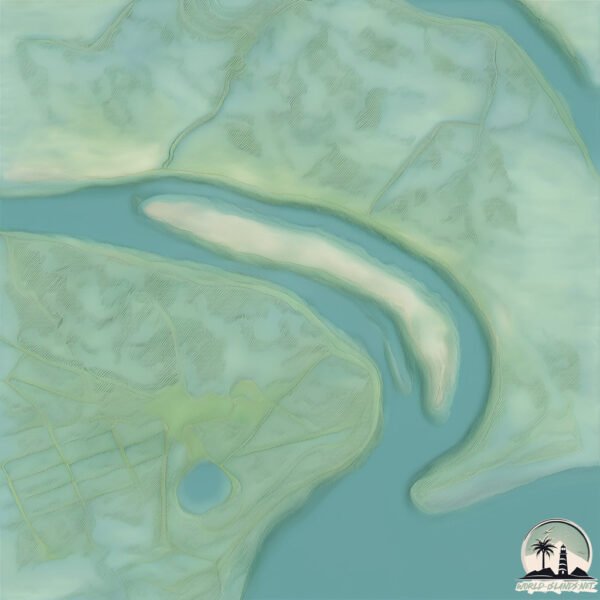Welcome to Grace , a Temperate island in the North Atlantic Ocean, part of the majestic Atlantic Ocean. This guide offers a comprehensive overview of what makes Grace unique – from its geography and climate to its population, infrastructure, and beyond. Dive into the details:
Geography and size of Grace
Size: 1.111 km²Coastline: 7 kmOcean: Atlantic OceanSea: North Atlantic OceanContinent: North America
Grace is a Small Island spanning 1.1 km² with a coastline of 7 km.
Archipel: –
Tectonic Plate: North America – Covers North America and parts of the Atlantic and Arctic Oceans, characterized by diverse geological features and varying levels of seismic activity.
The geographic heart of the island is pinpointed at these coordinates:
Climate and weather of Grace
Climate Zone: TemperateClimate Details: Humid Subtropical ClimateTemperature: Hot Summer
Climate Characteristics: With continuous rainfall and hot summers, this climate is common in some coastal regions, supporting diverse vegetation.
Topography and nature of Grace
Timezone: UTC-05:00Timezone places: America/New_YorkMax. Elevation: -2 m Mean Elevation: -3 mVegetation: WetlandTree Coverage: 48%
The mean elevation is -3 m. Remarkably, this unique island barely emerges above the sea level, showcasing nature’s fascinating interplay with the ocean. The island is characterized by Plains: Flat, low-lying lands characterized by a maximum elevation of up to 200 meters. On islands, plains are typically coastal lowlands or central flat areas.
Dominating Vegetation: Wetland
Vegetation: 2 vegetation zones – Low Diversity Island
Infrastructure and Travelling to Grace
Does the island have a public airport? no .
Does the island have a major port? no .
The mean population of Grace is 0 per km². Grace is Uninhabited. The island belongs to United States of America .
Continuing your journey, Murphy is the next notable island, situated merely km away.
Behind the scenes with Love Island ROYALTY Grace and Luca | The Laings Vlog
This week on The Laings, Sophie and Melissa prepare for an EXCLUSIVE interview with Love Island legends Grace and Luca!
Behind the scenes with Love Island ROYALTY Grace and Luca | The Laings Vlog
This week on The Laings, Sophie and Melissa prepare for an EXCLUSIVE ...
This week on The Laings, Sophie and Melissa prepare for an EXCLUSIVE interview with Love Island legends Grace and Luca!
The Maldives of Mindoro Philippines - Grace Island Resort - Vlog # 14
We experienced a private island resort just the three of us for the ...
We experienced a private island resort just the three of us for the celebration of our 9th wedding anniversary at Grace Island ...
The Ravishing Beauty of Grace Island | Tara sa Pinas
Experience a budget friendly Maldives trip without leaving the ...
Experience a budget friendly Maldives trip without leaving the country. Tara sa 'Pinas is a digital travel show that showcases the ...
United States of America is classified as Developed region: G7: Group of Seven – Major advanced economies, including Canada, France, Germany, Italy, Japan, the United Kingdom, and the United States. The level of income is High income: OECD.
News – Latest Updates and Headlines from Grace
Stay informed with the most recent news and important headlines from Grace. Here’s a roundup of the latest developments.
Loading...
Please note: The data used here has been primarily extracted from satellite readings. Deviations from exact values may occur, particularly regarding the height of elevations and population density. Land area and coastline measurements refer to average values at mean high tide.

